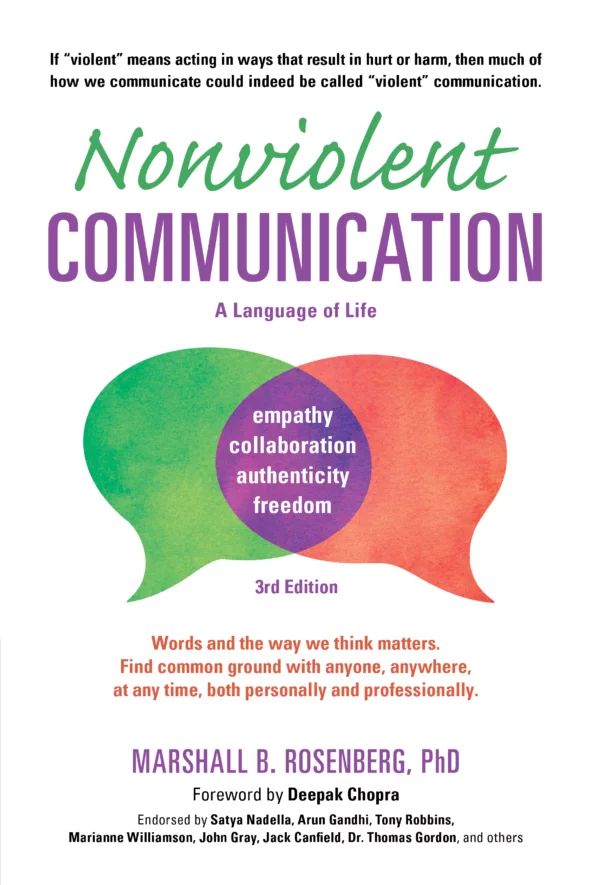Strong communication is the cornerstone of any thriving organization. However, misunderstandings and conflicts can often lead to poor outcomes. Inspired by Marshall Rosenberg’s transformative book, Nonviolent Communication, this guide will walk you through each of the steps in practicing NVC with examples to illustrate their importance.

What is Nonviolent Communication (NVC)?
Nonviolent Communication is a communication framework created by Marshall Rosenberg. It is designed to foster empathy, honesty, and conflict resolution. By transforming the way we relate to one another, NVC offers tools for maintaining respectful and meaningful relationships, whether in the workplace or in our personal lives.
Why Nonviolent Communication is Important
Effective communication is more than just conveying information; it’s about understanding perspectives, resolving conflicts, and fostering growth. NVC can be a game-changer for organizations, improving team cohesion, increasing job satisfaction, and enhancing performance. It’s a key ingredient to building a culture of compassionate excellence, as well.
The Four Components of NVC
NVC consists of four key components: Observations, Feelings, Needs, and Requests.
Observations
What it is:
Observations involve identifying the situation or the action that is either pleasing or problematic to you.
Example:
Instead of saying, “You’re always late,” say “I observed that you’ve arrived after the scheduled time for the last three meetings.”
Feelings
What it is:
Feelings describe your emotional state in response to your observations.
Example:
Instead of saying, “You make me angry,” say, “I feel frustrated when meetings start late.”
Needs
What it is:
Needs refer to the underlying requirements or values that generate the feelings.
Example:
Instead of saying, “You need to be punctual,” say, “I have a need for punctuality.”
Requests
What it is:
Requests are explicit asks for actions that can meet your needs without demanding or imposing.
Example:
Instead of saying, “Be on time,” say, “Would you consider aiming to arrive five minutes before our next meeting?”
All together, we can change this:
You’re always late and you make me angry. You need to be more punctual and you need to be on time.
into this:
I observed that you’ve arrived after the scheduled meeting time for the last three meetings. I feel frustrated when meetings start late. I have a need for punctuality so I can feel confident that we will get through all of the material. Would you consider aiming to arrive five minutes before our next meeting?
Steps to Implement NVC in Your Organization
- Start Small. Begin by practicing NVC in one-on-one interactions to build confidence.
- Practice Active Listening. Make sure to pay full attention when someone else is speaking and aim to understand their point of view.
- Avoid Judgments. Leave out any blame or judgment when expressing your observations, feelings, needs, and requests.
- Use “I” Statements. Frame the conversation around your own experiences and needs, rather than making it about the other person.
- Follow Up. Always revisit the outcomes of your NVC conversations to ensure that both parties’ needs are being met.
Use our Cheat Sheet
We’ve created this simple cheat sheet to make it easier to use and practice nonviolent communication.
At Heartwired, we understand the complex challenges of leading development teams in today’s hectic world. With a unique blend of compassionate leadership and technical expertise, we’re here to support your success. Whether it’s strategy development, team building, or conflict resolution, we’re committed to delivering compassionate excellence.
Schedule your Compassionate & Excellence-Driven Discovery Session